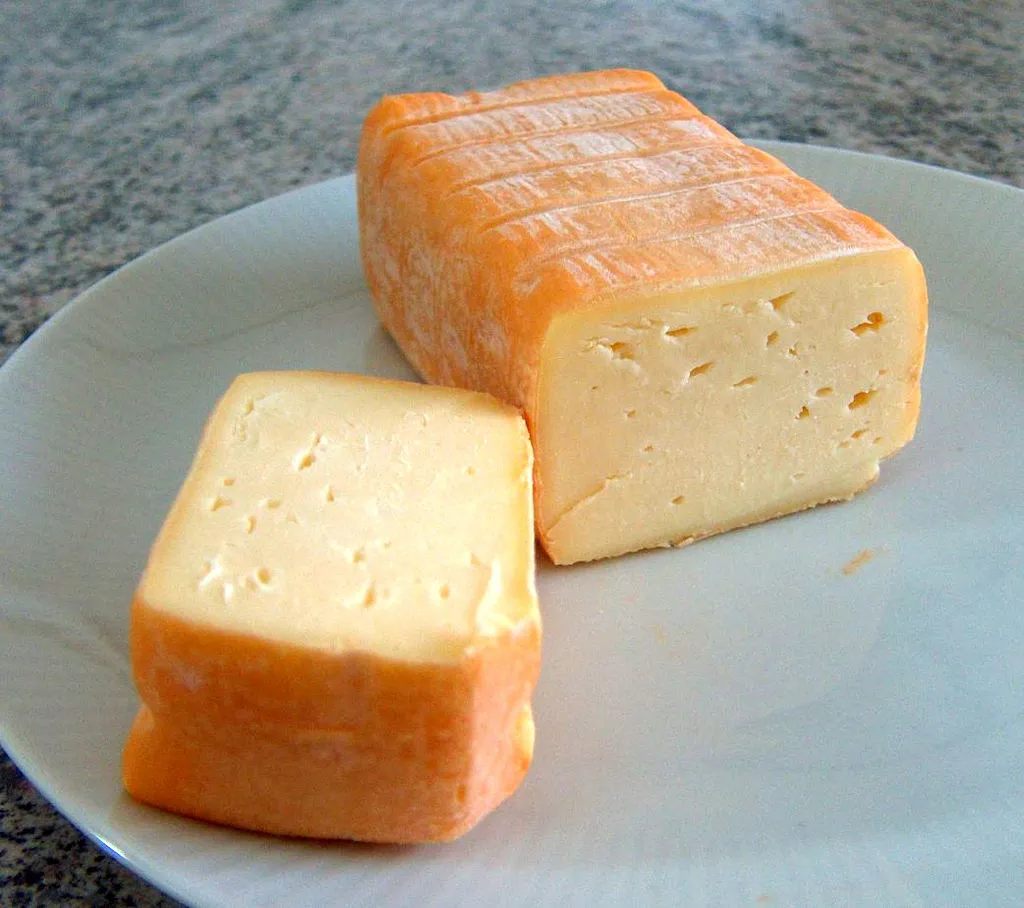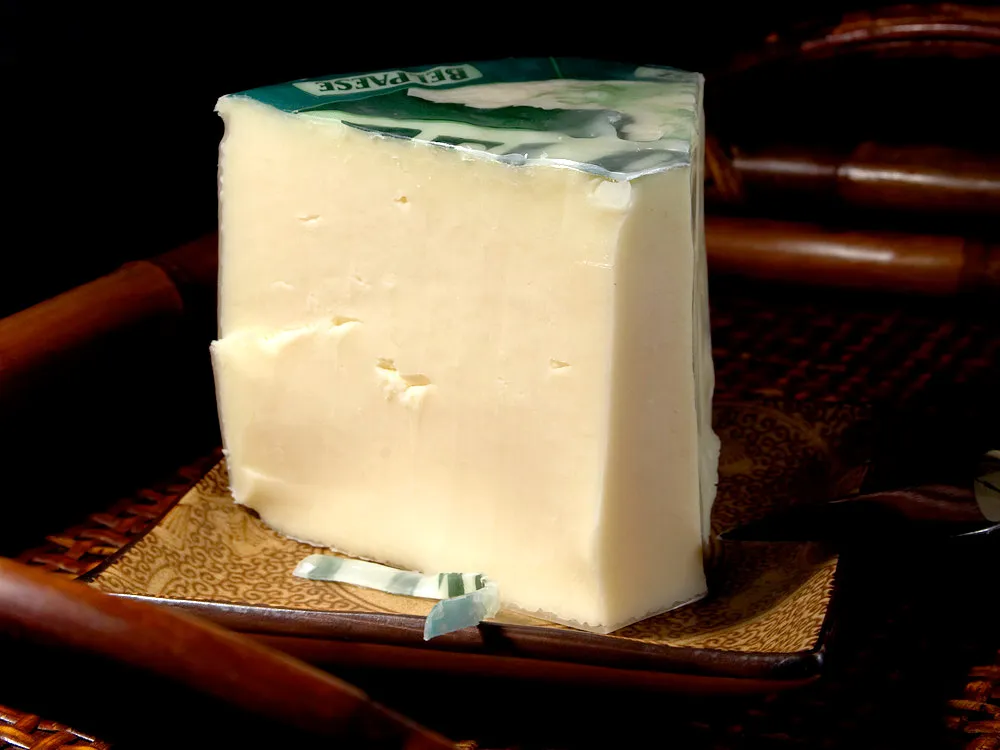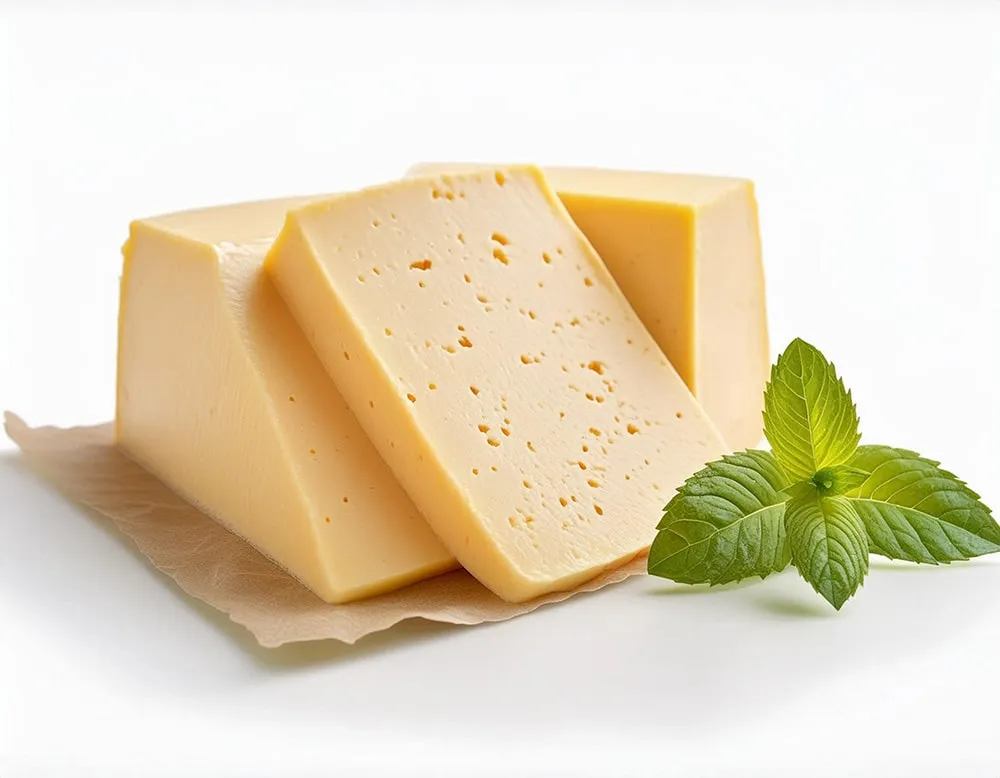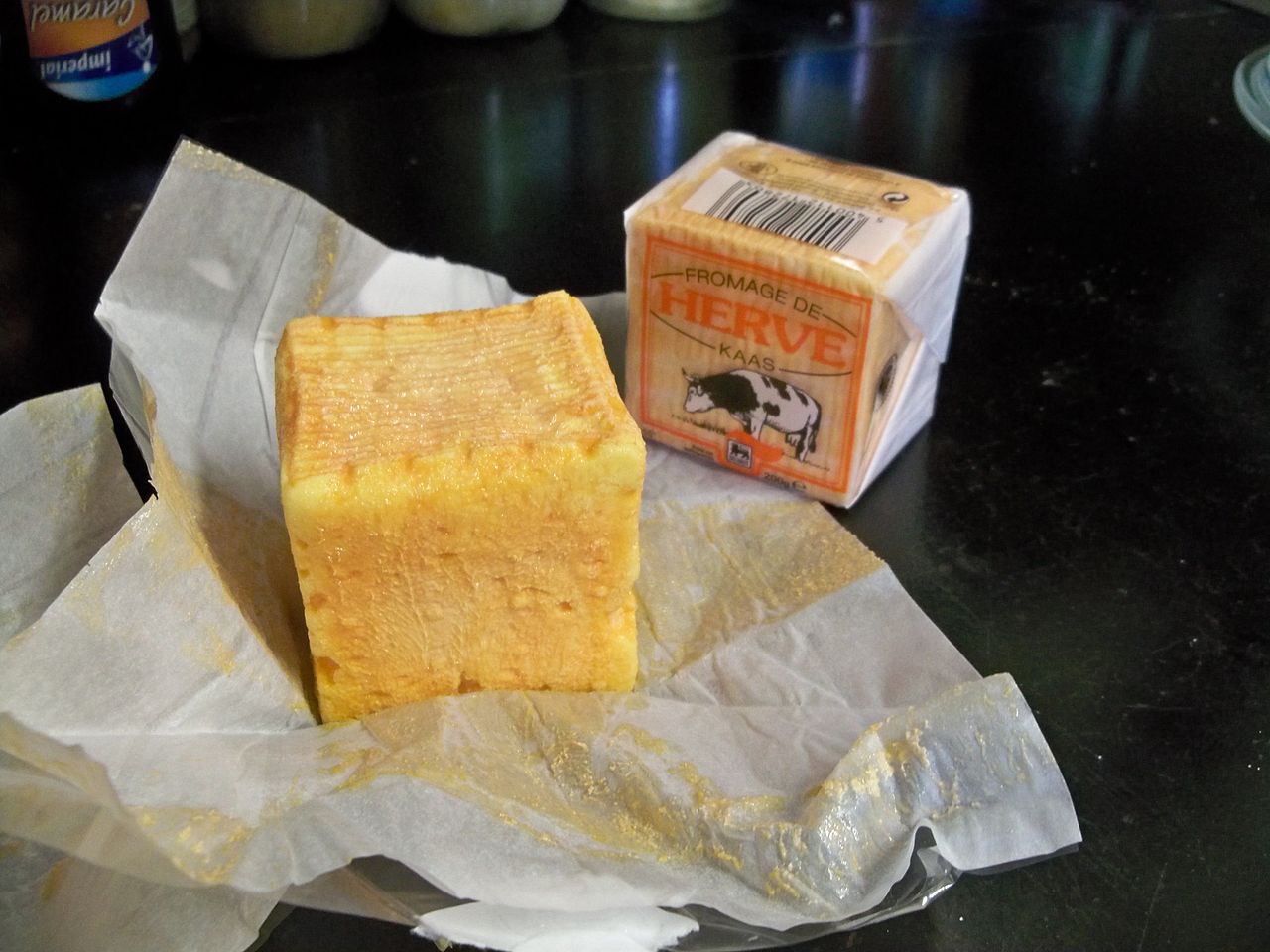Limburger kass
-
Country of origin: Belgium, Germany and Netherlands
-
Made from pasteurized cow's milk
-
Type: semi-soft, smear-ripened
What is Limburger Cheese? What Does Limburger Taste Like?
Limburger, with its unique and intense flavor profile, has captivated both cheese enthusiasts and culinary professionals. Its robust flavor and intense aroma have made it a cheese of both admiration and notoriety.
Limburger is a semi-soft, washed-rind cheese that originated in the historical Duchy of Limburg, now divided into three countries: Germany, Belgium, and the Netherlands. The cheese is popularly known for its stinky aroma, which has been compared to foot odor. Today, most of the cheese is exclusively made in Germany, making it the sole producer in Europe. A thin, pale, orange-brown rind adorns the exterior of the cheese, a consequence of regular washings.
The cheese is well-loved in numerous countries around the world, where it is prized for its distinctive qualities. In this article, we will explore the multiple aspects of Limburger cheese, from its taste and smell to its origin and uses.
Artisanal cheese makers prepare this cheese from pasteurized cow’s milk sourced from local, organic farms. This local connection not only ensures the quality and freshness of the cheese but also supports the sustainability of the farming community. As a result, the flavor of the cheese is mild despite the stinky aroma.
What Does Limburger Cheese Taste Like?
The taste of Limburger cheese is a unique and intriguing aspect of this cheese. It boasts an intense and complex flavor profile that can be quite polarizing. Some describe it as robust and sharp, while others find it to be rich and savory. The taste can range from tangy and earthy to slightly nutty, depending on the age of the cheese. The texture is typically creamy and smooth, allowing the flavors to coat your palate with each bite.
Even so, the taste of Limburger cheese, particularly when aged, is not for the faint-hearted. It's a bold and assertive flavor that can be a true delight for those who appreciate intense flavors.
Limburger cheese, with its intense aroma often compared to that of sweaty feet or old socks, is a result of the specific bacteria used in the fermentation process, notably Brevibacterium linens. This bacterium is also responsible for the reddish-orange rind that develops on the cheese, adding to its unique characteristics.
In the first month, Limburger is firm and crumbly and becomes chalky and soft at the end of six weeks. After two months, the cheese is much smoother and creamy. After three months, Limburger acquires the infamous aroma due to a smear-ripening bacterium. This cheese has a significant grassy and mushroomy taste underlined by a delicate tang at the end.
When tasting Limburger cheese, it is common to pair it with robust flavors that can complement its intensity. This cheese pairs well with dark bread, such as pumpernickel, as well as bold accompaniments like onions, mustard, and pickles alongside Belgian-style ales and icy cold bock beer. For a classic serving, try it between two slices of dark rye bread and a slice of onion, which enhances its unique flavor profile.
The combination of these flavors creates a sensory experience that is both unique and memorable, making Limburger cheese a favorite among adventurous food enthusiasts.
What Is Limburger Cheese Made Of?
Limburger cheese is traditionally made from cow's milk, specifically the milk of Holstein cows.
The production process involves coagulating the milk using rennet, which causes the milk proteins to curdle and form a solid mass. This mass is then cut, drained, and pressed to remove excess moisture. The resulting curds are salted and aged to develop the characteristic flavors and texture found in Limburger cheese.
During the aging process, the cheese is typically washed with a brine solution or other liquids like beer or wine. This washing contributes to the development of the cheese's distinct aroma and helps enhance the flavors. The length of aging can vary from a few weeks to several months, depending on the desired taste and texture.
Limburger cheese is known for its spicy aroma, often described as earthy, mushroomy, and even somewhat reminiscent of feet. This distinctive smell is a result of the specific bacteria used in the cheese-making process, notably Brevibacterium linens. This bacterium is responsible for breaking down the proteins on the cheese's surface, creating its characteristic reddish-orange rind and contributing to its strong smell.
When it comes to taste, Limburger cheese offers a complex profile that can range from mild and buttery when young to tangy and robust as it ages. The interior of the cheese is soft and creamy, with a texture that becomes increasingly runny towards the rind. This creamy texture is a result of the high-fat content in cow's milk, which gives Limburger its rich and indulgent mouthfeel.
What Is Limburger Cheese Used For?
Limburger cheese, with its strong flavor, is a versatile ingredient that can elevate a variety of dishes. It adds depth to sandwiches and burgers, creates a creamy topping when melted, and brings a unique twist to recipes like quiches, salads, and dips.
Furthermore, Limburger cheese pairs exceptionally well with robust flavors, such as cured meats, pickles, and dark rye bread. Its bold characteristics make it an ideal accompaniment to charcuterie boards and cheese plates, adding a distinct and memorable element to any spread.
What Is Special About Limburger Cheese?
One of the most remarkable aspects of Limburger cheese is its notoriously pungent smell, which is not dissimilar to sweaty socks or dirty feet. In fairness, the scent can be pretty overpowering, which is why Limburger cheese is often stored in airtight containers and served with caution to avoid overwhelming sensitive noses.
Although the strong smell may deter some, it is also what attracts enthusiasts to this unique cheese. The distinct aroma is a result of the bacteria used during the production process, which contributes to the cheese's characteristic flavor and smell. Despite its unconventional reputation, Limburger has a dedicated fan base who appreciate its boldness and distinctiveness.
What Does Limburger Cheese Smell Like?
As mentioned earlier, Limburger cheese is well-known for its potent smell. The aroma can be described as earthy, funky, and on the verge of being offensive to some.
The intensity of the odor varies depending on the age of the cheese, with older cheeses exhibiting a more robust aroma. Despite its reputation, the smell is not indicative of the taste, and many find that the bold flavors harmonize well with the cheese's distinctive smell.
It is worth noting that the potent smell of Limburger cheese is a result of the specific bacteria strains used in the production process. These bacteria help break down the proteins and fats in the cheese, contributing to the flavor development and the characteristic smell that Limburger cheese is known for.
Where Is Limburger Cheese From?
Limburger cheese originated in the historical region of Limburg, which spans parts of modern-day Belgium, Germany, and the Netherlands. The cheese has a long history that can be traced back to the 19th century when it was first produced by Trappist monks in Belgium.
Over time, the popularity of Limburger cheese grew, and it became synonymous with the town of Limburg an der Lahn in Germany. Today, Limburgers from various regions continue to produce this distinctive cheese using traditional methods and recipes passed down through generations.
Limburger cheese is a truly unique cheese with a strong flavor, a distinctive smell, and a rich history. Its taste ranges from tangy and earthy to nutty and bold, making it a favorite among those who enjoy robust flavors. While its pungent aroma may be off-putting to some, true cheese enthusiasts appreciate the complexity and depth that Limburger cheese brings to the table. Whether enjoyed on its own, melted into recipes, or paired with other flavors, Limburger cheese offers a memorable culinary experience that is sure to leave a lasting impression.

Over 200,000 page views per month, Put your store on our map!
Contact UsOther cheeses from Belgium:
Other German cheeses:
Other cheeses from Netherlands:
When it comes to cheese, there are countless varieties available, each with its own unique flavor and texture.
Limburger is one such cheese that has a distinct aroma and taste. However, if you find yourself in a situation where you cannot access or simply do not enjoy Limburger cheese, there …
Read MoreLimburger kass Q & A
-
Is Limburger Cheese Lactose-Free?
If you are lactose intolerant or have difficulty digesting lactose, knowing the lactose content of foods is crucial. Unfortunately, …
Read More -
Is Limburger Cheese Vegetarian?
For those following a vegetarian diet, it is vital to consider the animal-derived components in food products.
Limburger …
Read More -
Is Limburger Cheese Gluten-Free?
For individuals with gluten sensitivities or celiac disease, maintaining a gluten-free diet is crucial.
The good news is that …
Read More -
Does Limburger Cheese Melt?
When it comes to melting, Limburger cheese behaves differently compared to famous melting cheeses such as cheddar or mozzarella …
Read More -
How To Store Limburger Cheese
Proper storage is critical to preserving the unique qualities of Limburger cheese and preventing spoilage.
To store Limburger …
Read More -
How Long Can Limburger Cheese Sit Out?
Limburger cheese is a delicate product that requires proper handling and storage to maintain its quality. Leaving Limburger cheese …
Read More -
Can You Freeze Limburger Cheese?
Freezing cheese is a common method to extend its shelf life, but Limburger cheese may not fare well in …
Read More -
Can Dogs Eat Limburger Cheese?
Although dogs have a more robust digestive system compared to cats, feeding them Limburger cheese should be done sparingly …
Read More -
Can Cats Eat Limburger Cheese?
While cats are big fans of their dairy treats, Limburger cheese is not the ideal choice for our feline …
Read More -
Can You Eat Limburger Cheese While Pregnant?
Many expecting mothers are cautious about their diet and seek clarity on which foods are safe to consume during …
Read More






